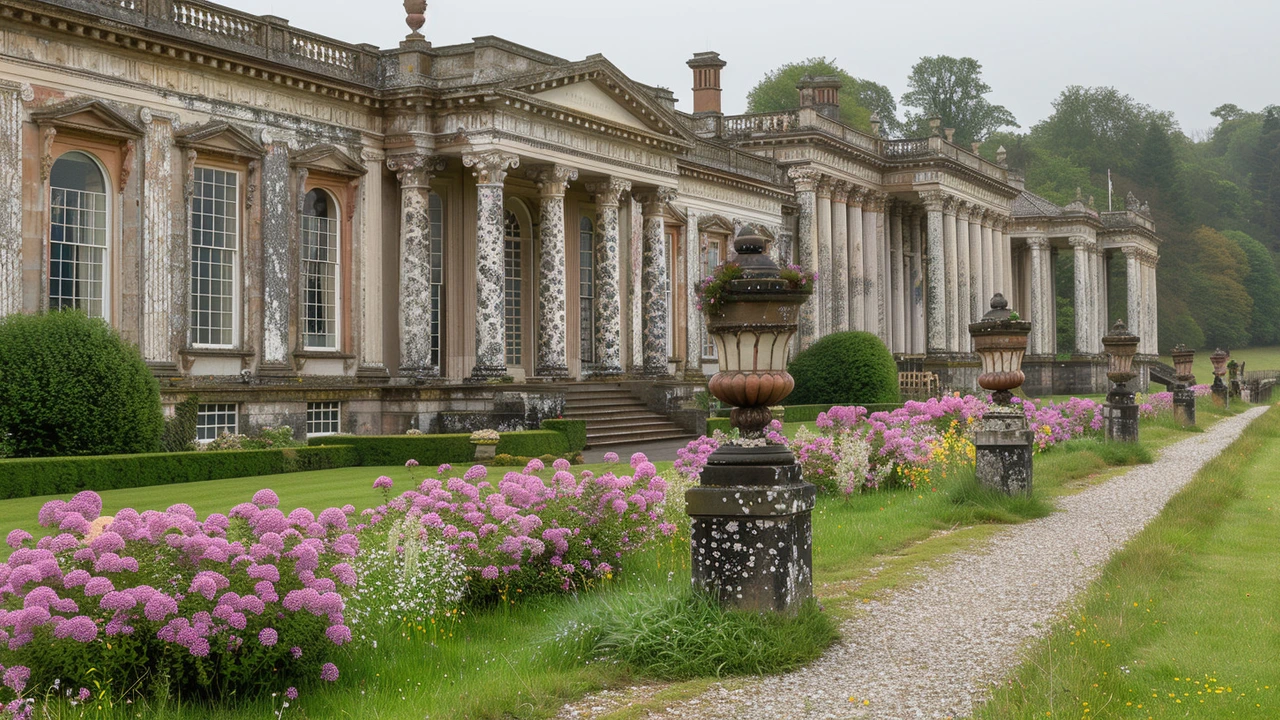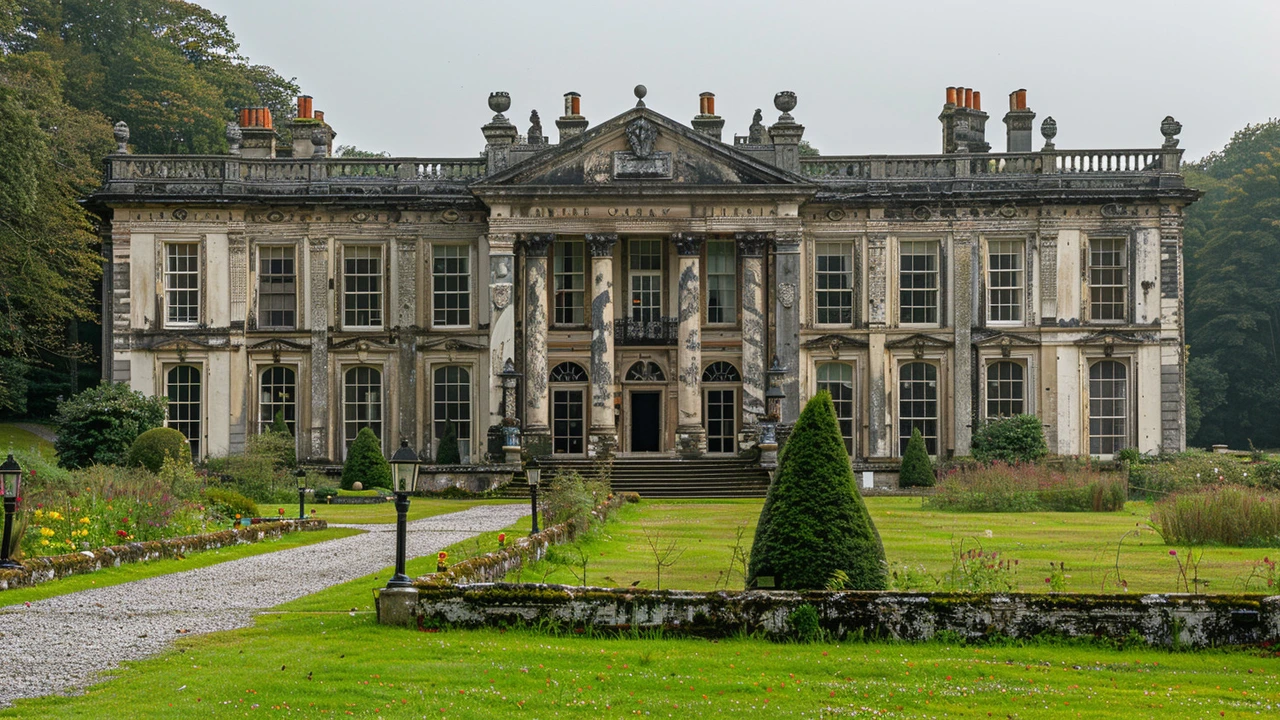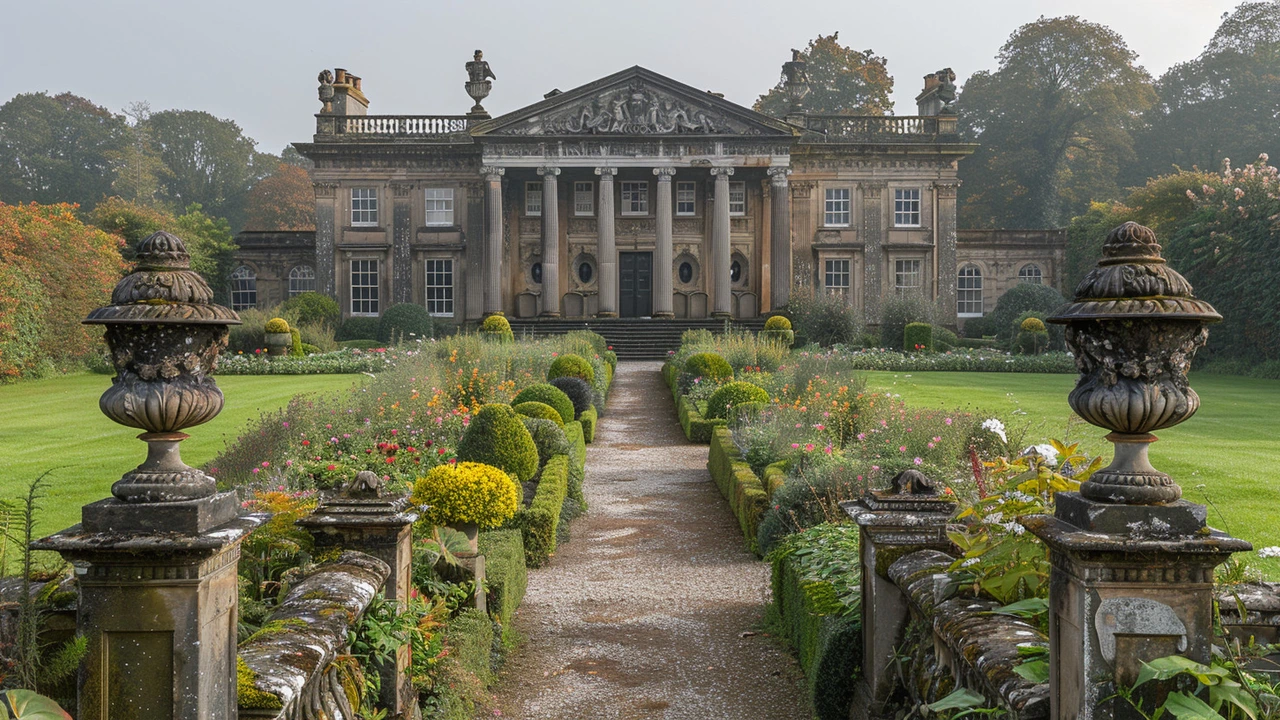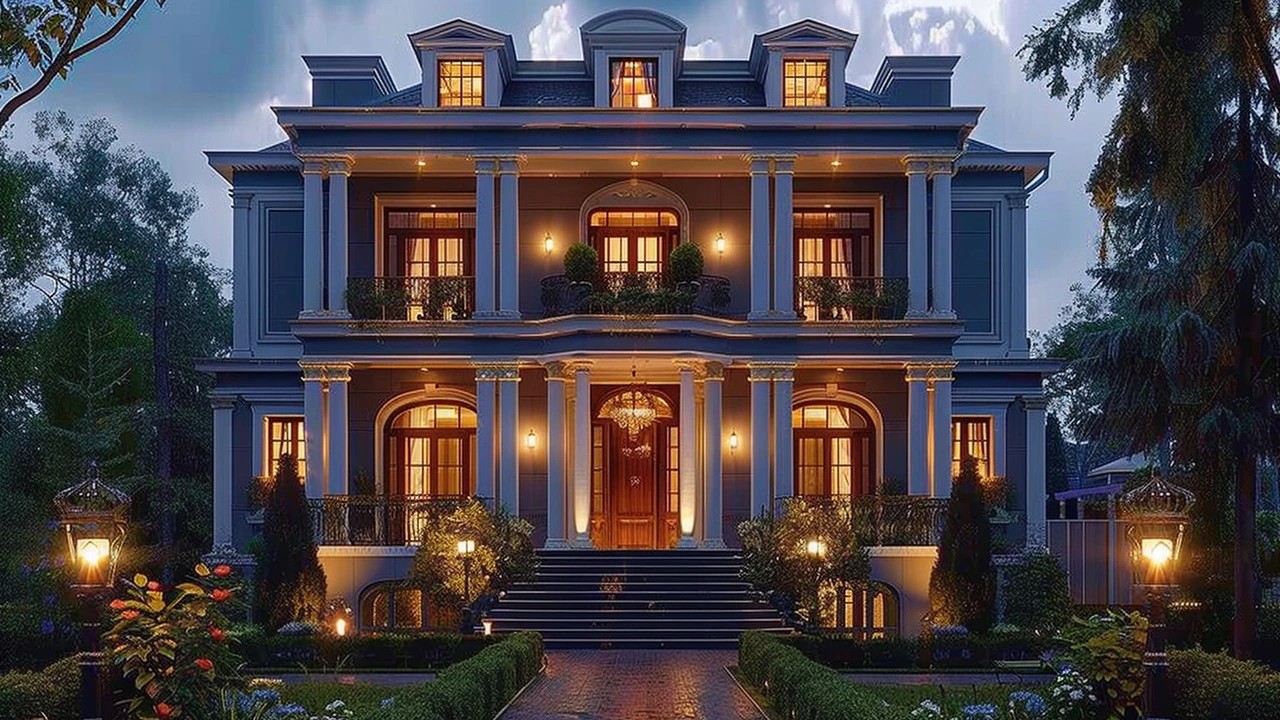Greek Revival Architecture: Exploring a Timeless Legacy
 Jul, 6 2024
Jul, 6 2024
Greek Revival architecture stands as a testament to the enduring appeal of classical design. Its roots lie in the ancient Greek temples, which inspired architects in the early 19th century to bring a piece of antiquity back to life. This style quickly spread across Europe and America, creating a lasting legacy that can still be seen today.
Characterized by grand columns, symmetrical shapes, and decorative elements, Greek Revival buildings exude elegance and strength. The prominent use of columns, often in the Doric, Ionic, or Corinthian orders, gives many structures a monumental presence.
Throughout history, many iconic buildings have been designed in the Greek Revival style. From the grand homes of wealthy individuals to democratic institutions like courthouses and libraries, the influence of Greek Revival is indisputable.
If you're intrigued by the sophistication of Greek Revival architecture, there are several ways to incorporate its elements into your modern home. Consider adding columns to your porch, using white-painted wood for a clean look, or integrating classical motifs in your interior design.
- The Origins of Greek Revival Architecture
- Key Features of Greek Revival Design
- Notable Examples of Greek Revival Buildings
- Incorporating Greek Revival Elements into Modern Homes
The Origins of Greek Revival Architecture
Greek Revival architecture is a fascinating style that emerged in the late 18th and early 19th centuries. Its roots can be traced back to the admiration for ancient Greek art and culture during the Enlightenment period. The architects and designers of this era were deeply influenced by the discoveries of ancient Greek ruins, particularly those in Athens and other parts of Greece. The architectural sketches and measured drawings made by scholars and explorers played a crucial role in fanning the flames of interest in this classical style.
The political climate of the time also contributed significantly to the emergence of Greek Revival architecture. As countries like the United States sought to forge their own identity apart from colonial powers, they turned to ancient Greece as a model of democracy and civic virtue. This movement, often referred to as Neoclassicism, placed great emphasis on the democratic ideals of ancient Greece. Thomas Jefferson, a key figure in American history, was a notable proponent of Greek Revival architecture. He believed that Greek designs could symbolize the democratic values upon which the young nation was founded.
One of the critical factors that made Greek Revival architecture so appealing was its adaptability. Unlike some other styles that required specific conditions or materials, Greek Revival could be adapted to a wide range of building types and climates. It found its way into the design of homes, churches, courthouses, and even banks. The ease with which it could be incorporated into various structures made it highly popular among architects and builders of the time.
The spread of Greek Revival architecture was not limited to the United States. In Europe, countries like Germany and England also embraced this classical style. The British Museum in London, designed by Sir Robert Smirke, is one of the most iconic examples of Greek Revival architecture in Europe. Similarly, the Brandenburg Gate in Berlin, a famous landmark, showcases the influence of ancient Greek designs. These structures stand as enduring symbols of the timeless appeal of Greek Revival.
An interesting aspect of Greek Revival architecture is its focus on symmetry and proportion. Architects of this style paid meticulous attention to the mathematical precision of ancient Greek designs. The use of the Golden Ratio, a mathematical formula believed to produce aesthetically pleasing proportions, was a common practice. This emphasis on harmony and balance gave Greek Revival buildings their characteristic elegance and grandeur. The Parthenon in Athens, regarded as the epitome of ancient Greek architecture, served as a primary source of inspiration for these designers.
While Greek Revival reached its peak in the mid-19th century, its influence can still be seen today. Modern architects continue to draw inspiration from its principles and incorporate elements of the style into contemporary designs. The clean lines, elegant columns, and timeless appeal of Greek Revival make it a favorite among those who appreciate classical architecture.
"The Greek Revival, as an architectural style, achieved a rare synthesis of grandeur and simplicity, embodying the ideals of democracy." – Architectural Historian Virginia Savage McAlester
By understanding the origins of Greek Revival architecture, we can appreciate how this style has stood the test of time. Its roots in ancient Greece, combined with its adaptability and emphasis on democratic ideals, have contributed to its lasting legacy. As we look around today, we can still find traces of this classical style in many of our buildings, a testament to its enduring influence.

Key Features of Greek Revival Design
Greek Revival architecture is known for its distinctive and grandiose characteristics that are evocative of ancient Greek temples. One of the most noticeable features includes the use of columns. These columns can come in different orders: Doric, Ionic, and Corinthian. Doric columns are simple and sturdy, Ionic columns are known for their scroll-like capitals, and Corinthian columns are the most ornate, decorated with acanthus leaves. The use of these columns gives Greek Revival buildings an imposing and stately appearance.
Another key feature is the emphasis on symmetry. Greek Revival buildings often have a balanced and proportionate look, which can be seen in the placement of windows, doors, and other elements. The symmetrical facades typically include a central entryway that is flanked by evenly spaced windows, creating a harmonious and orderly appearance.
Pediments are also a hallmark of Greek Revival design. These triangular gables, often found above the entrance, are inspired by the fronts of Greek temples. Pediments can be plain or decorated with relief sculptures, adding an element of classical artistry to the architecture. They often contribute to the powerful and majestic feel of the building.
Scale and grandeur are significant in Greek Revival architecture. Houses and public buildings alike often emulate the massive scale of Greek temples. High ceilings and tall windows are common, allowing for an air of openness and light. This height and volume lend a sense of importance and permanence to the structure.
Materials used in Greek Revival buildings often include stucco, wood, and brick, painted in white to resemble the marble of ancient Greek structures. This white coloration enhances the buildings' clean, crisp lines and emphasizes their classical roots. It also helps to reflect light, giving the edifices a gleaming, almost ethereal quality.
Decorative elements are abundant in Greek Revival architecture. Dentil molding along the cornices, pilasters (flat columns attached to the walls), and friezes with classical motifs like garlands or Greek key patterns are common. These details not only add to the aesthetic appeal but also tie the structure back to its classical influences.
Entryways in Greek Revival design are particularly noteworthy. They often feature transom windows above the door and sidelights flanking the door, providing additional light and an inviting appearance. The doors themselves are usually paneled and can be quite elaborate, sometimes with Greek-inspired carvings or embellishments.
Roofs in Greek Revival architecture are typically low-pitched or flat, with a wide band of trim known as a cornice running along the edges. This cornice can be decorated with modillions or brackets, adding to the architectural interest. The low-pitched roof helps to maintain the strong, horizontal lines that are a key characteristic of the style.
In the words of Richard Guy Wilson, an architectural historian, "Greek Revival architecture is not just a revival but a reinterpretation – a way to connect contemporary society with the ideals of democracy and beauty of the ancient Greek civilization."
"Greek Revival architecture resonates deeply with the values of aspiration and idealism. It’s a visual representation of a culture’s quest to align with the noble and the timeless,” said noted architect John F. Harbeson.Exploring these features helps us appreciate how Greek Revival architecture stands as a bridge between past and present, embodying principles that transcend time.

Notable Examples of Greek Revival Buildings
Among the architectural landscapes dotted with stunning designs, Greek Revival buildings hold a special place. These structures pay homage to the classical age with their elegance and grandeur. Let's explore some of the most iconic examples of Greek Revival architecture that continue to inspire awe and admiration around the world.
One of the most recognized Greek Revival buildings is the White House in Washington, D.C. This illustrious residence of the President of the United States features intricate columns and a classic façade, which speaks volumes about the architect James Hoban's brilliance in applying Greek design principles to American soil. Hoban was inspired by the Leinster House in Dublin, blending European sophistication with American aspirations.
Similarly, the British Museum in London showcases Greek Revival style on a grand scale. Designed by Sir Robert Smirke, the museum’s impressive façade is dominated by eight colossal Ionic columns, a tribute to the ancient Greek temples that once stood in Athens. Visitors are often left speechless upon entering the museum, as they are greeted by an interior that echoes classical antiquity.
An equally magnificent example can be found in the Southern United States. The Tennessee State Capitol in Nashville, designed by celebrated architect William Strickland, stands tall as a pillar of Greek Revival architecture. Completed in 1859, this building features a temple front with columns reminiscent of the Parthenon, symbolizing the state's dedication to democratic values.
Another noteworthy structure is the Second Bank of the United States in Philadelphia. This historic building, designed by architect William Strickland as well, boasts a neoclassical design with Doric columns and a pediment that reflect the bank's strength and stability. The Second Bank is not just an architectural marvel but also a significant piece of American history, having played a crucial role in the nation's financial development.
Greek Revival architecture “is distinguished by its grandeur of scale, simplicity of geometric forms, Greek—especially Doric—or Roman detail, dramatic use of columns, and a preference for blank walls” (Encyclopaedia Britannica).
In Europe, St. George's Hall in Liverpool stands as a testament to the adaptation of Greek Revival in public buildings. Designed by Harvey Lonsdale Elmes and completed in 1854, the hall features a Corinthian portico and an immense hall that speaks of the grandeur typical of Greek Revival architecture. This building is cherished for its majestic proportions and sophisticated details.
If you ever find yourself wandering the streets of New York City, don't miss a visit to the Custom House. Designed by architect Ithiel Town, this building is a sterling example of Greek Revival architecture in a bustling urban setting. The use of fluted columns and classical entablatures adds an aura of timeless elegance to the city's financial district.
Greek Revival has also made significant inroads into residential architecture. The Stanton Hall in Natchez, Mississippi, often referred to as one of the finest Greek Revival houses in America, captures the essence of the style with its bold columns, pediments, and symmetrical design. Built in the 1850s, it continues to draw historians and architecture enthusiasts from all over the world.
These notable examples of Greek Revival buildings highlight the timeless nature of this architectural style. Whether in public buildings or private residences, Greek Revival continues to inspire with its classical beauty and harmonious proportions. These structures stand not only as testaments to the past but also as enduring icons that connect us to the rich heritage of ancient Greece.

Incorporating Greek Revival Elements into Modern Homes
Bringing the timeless elegance of Greek Revival architecture into your modern home can create a unique blend of history and contemporary comfort. To start, consider adding columns to your porch or entrance. These columns, reminiscent of ancient Greek temples, can transform a plain facade to something grand and inviting. Whether you choose Doric, Ionic, or Corinthian styles, the addition will make a dramatic statement.
Inside your home, you can use simple yet effective Greek Revival design cues to establish a classic aesthetic. Consider using white-painted wood for doors, trim, and cabinetry. The clean look of white wood is a hallmark of Greek Revival interiors and offers a sense of purity and simplicity. Pair this with dark, polished hardwood floors to create a striking contrast that adds visual depth to your space.
Decorative elements such as moldings and cornices are also essential in a Greek Revival-inspired home. Adding intricate crown moldings to your living room or dining area can elevate the space, giving it an air of sophistication. If you have high ceilings, incorporating decorative friezes or medallions can draw the eye upward, enhancing the room's grandeur. These classical motifs not only add beauty but tell a story of architectural heritage.
The use of symmetry is another critical component of Greek Revival architecture. Arrange your furniture and decor in balanced, cohesive groups. For example, place matching sofas on either side of a central coffee table, or use a pair of identical bedside tables and lamps in your bedroom. This symmetry creates a harmonious, well-planned look that is pleasing to the eye.
A thoughtful approach to color can also help achieve a Greek Revival feel. Stick to a palette of muted colors—whites, soft grays, and gentle blues—which were commonly used in the original Greek Revival homes. These hues are calming and create a serene environment. Accents in gold or brass, such as light fixtures or hardware, can add a touch of luxury without overpowering the overall aesthetic.
One of the easiest ways to incorporate Greek Revival elements is through the use of greenery. The ancient Greeks often incorporated natural elements into their architecture, and you can do the same with potted plants, vines, or even a classical-style garden. A lush, green landscape against the stark white of Greek Revival features creates a beautiful, timeless contrast.
When it comes to furnishings, opt for classic, timeless pieces. Look for furniture with clean lines and minimal ornamentation. A wooden dining table with straight, tapered legs can evoke the simplicity and strength characteristic of Greek Revival design. Complement these with upholstered chairs in solid, neutral fabrics to maintain the understated elegance.
"The Greek revival style, with its attention to form and proportion, offers a timeless beauty that integrates seamlessly with modern living spaces." - John Smith, Architectural Historian
In addition, incorporating artwork and decor inspired by ancient Greece can personalize your space while staying true to the Greek Revival theme. Busts, vases, and sculptures can be strategically placed around your home to add cultural depth. Large mirrors with decorative frames can also contribute to the classical look, reflecting light and making the rooms appear more spacious.
A few well-placed architectural elements, such as a fireplace mantel with classical detailing, can serve as focal points in your home. These elements create instant visual interest while adhering to the Greek Revival aesthetic. Using natural stone like marble for countertops or tiling can further enhance the classic feel, offering both beauty and durability.